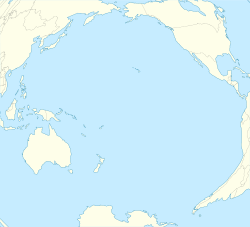Lord Howe Seamount Chain facts for kids
Quick facts for kids Lord Howe Seamount Chain |
|
|---|---|
| Location | |
| Location | Coral and Tasman seas |
| Coordinates | 26°22′36.7″S 159°15′37.9″E / 26.376861°S 159.260528°E |
| Geology | |
| Type | Seamount chain |
The Lord Howe Seamount Chain is one of the two parallel seamount chains alongside the east coast of Australia; the Lord Howe and Tasmantid seamount chains both run north-south through parts of the Coral Sea and Tasman Sea. These chains have longitudes of approximately 159°E and 156°E respectively.
The Lord Howe Seamount Chain has been known under a variety of different gazetted names, including the Lord Howe Seamounts, Lord Howe Guyots, Lord Howe Rise Guyots and the Middleton Chain.
The Lord Howe Seamount Chain is on the western slope of Lord Howe Rise, a deep-sea elevated plateau which is a submerged part of Zealandia. The Tasmantid and Lord Howe seamount chains are both broadly within the Tasman basin (the abyssal plain between Lord Howe Rise and the Australian continental shelf), and lie on opposite sides of Dampier Ridge (a submerged continental fragment).
The Lord Howe Seamount Chain extends from the Chesterfield group (20°S) to Flinders Seamount (34.7°S). It includes Nova Bank, Argo and Kelso seamounts, Capel and Gifford guyots, Middleton and Elizabeth reefs, Lord Howe Island and Ball's Pyramid.
The Lord Howe and Tasmantid chains each resulted from the Indo-Australian Plate moving northward over a stationary hotspot; the hotspot for the Lord Howe chain is expected to presently be beneath Flinders Seamount. On the Australian mainland, a third north-south sequence of extinct volcanoes (which includes the Glass House Mountains) is likely to have the same origin.
The chain formed during the Miocene. It features many coral-capped guyots.


